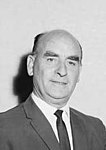This article needs additional citations for verification. (April 2024) |
| ||||||||||||||||||||||||||||||||||
All 51 seats in the Western Australian Legislative Assembly and 15 (of the 30) seats to the Western Australian Legislative Council 26 Assembly seats were needed for a majority | ||||||||||||||||||||||||||||||||||
|---|---|---|---|---|---|---|---|---|---|---|---|---|---|---|---|---|---|---|---|---|---|---|---|---|---|---|---|---|---|---|---|---|---|---|
| ||||||||||||||||||||||||||||||||||
| ||||||||||||||||||||||||||||||||||
Elections were held in the state of Western Australia on 20 February 1971 to elect all 51 members to the Legislative Assembly and 15 members to the 30-seat Legislative Council. The four-term Liberal-Country Party coalition government, led by Premier David Brand, was defeated by the Labor Party, led by Opposition Leader John Tonkin.
This was the first election in which no seats were uncontested since the introduction of responsible government in 1890. This was partly due to the Democratic Labor Party deciding to contest every seat up for election in both Houses.
There was a large increase in the number of electors, because this was the first election after 18 year olds had been given the vote.[1]
- ^ "Swing to Labor threatens WA Govt". The Sydney Morning Herald. 22 February 1971. p. 1.

